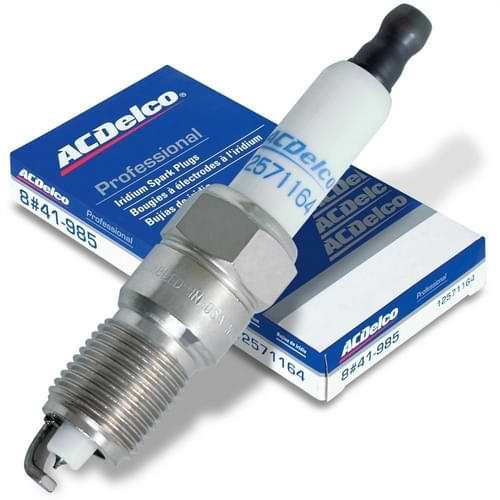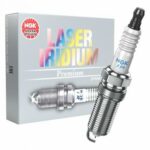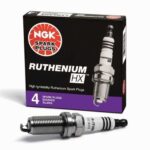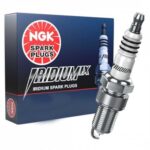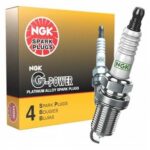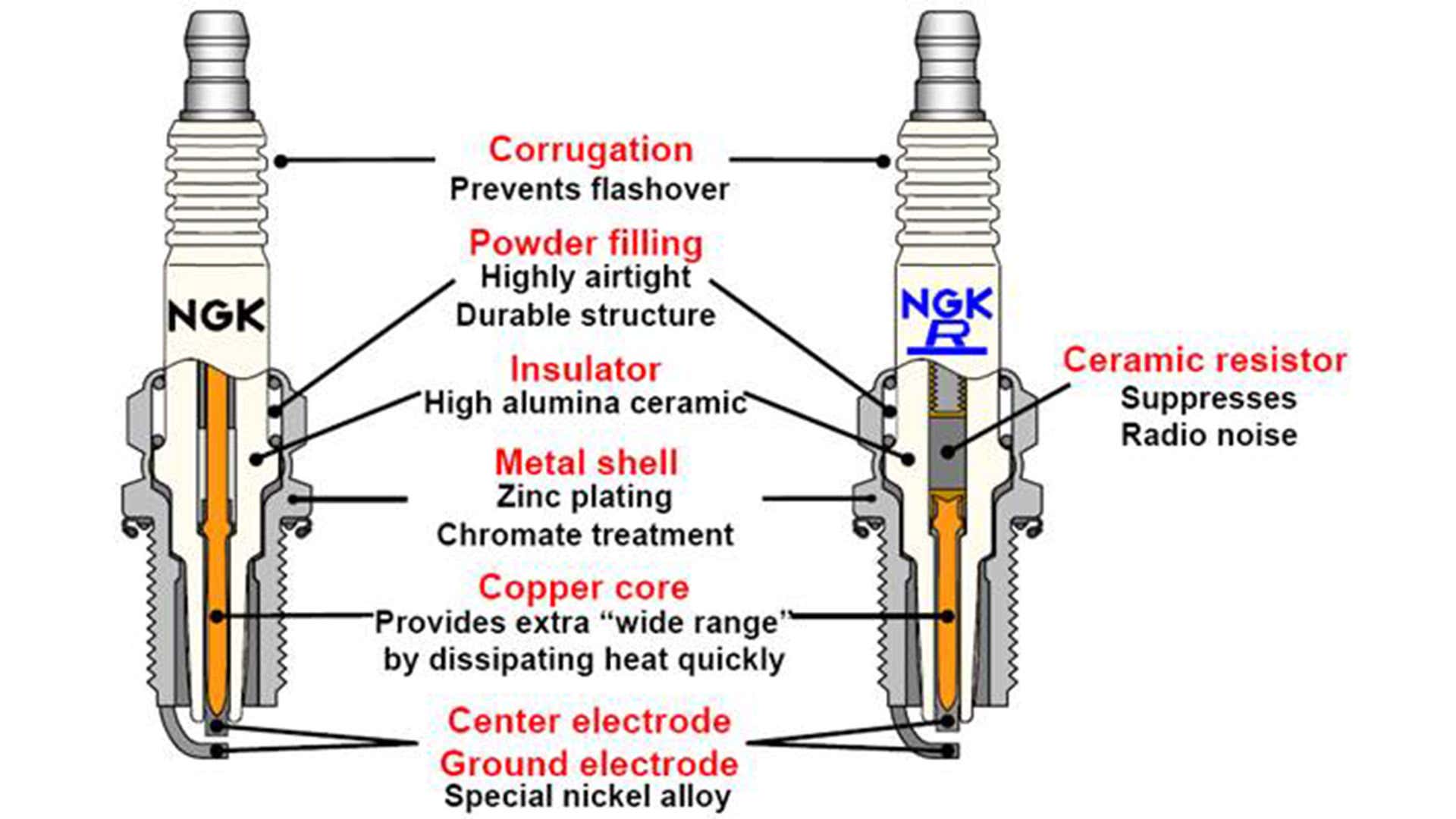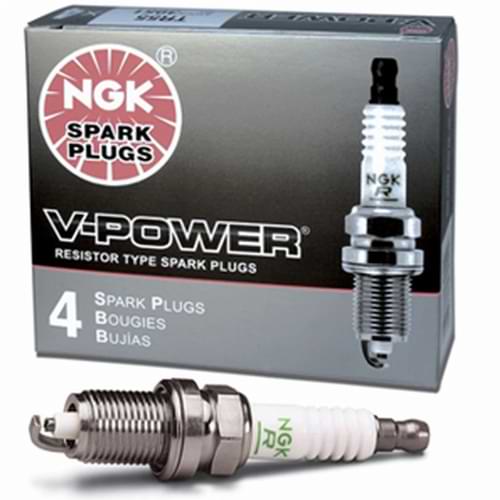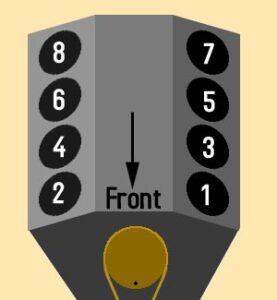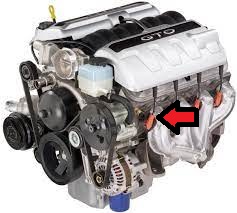INTRO
It has come a time in your maintenance schedule for your 2004-2006 Pontiac GTO to have the spark plugs changed. The service manual recommends changing the spark plugs at 100,000 miles. The maintenance schedule is the same for both the 2004 GTO with the LS1 engine and the 2005 and 2006 GTO with the LS2 engine.
The service manual does recommend changing the spark plugs at 100,000 miles, but you may want to change them sooner. Personally, I highly suggest you change them a little sooner. It is a fairly easy job to do, and even a beginner mechanic can do this task with just a few basic tools and some patience.
How often you change your spark plugs will vary depending on driving habits, and any modifications you may have done to your vehicle. If your engine is absolutely stock with no modifications done to it including exhaust, you can go much longer without changing the spark plugs and follow the schedule of changing them at the 100,000-mile mark on the odometer using the factory spark plugs.
WHICH SPARK PLUG COMPANY TO USE
The next question of course is which spark plug should you use. There are many different companies that manufacture spark plugs. The factory spark plug is the AC Delco 12571164 Iridium spark plug.
There is one problem with this product though. THEY DO NOT MAKE THIS ANYMORE. This spark plug has long been discontinued and has changed part numbers more often than we change our oil. Now if you would like to replace them with another AC Delco Iridium spark plug, I highly suggest contacting your auto parts store and check the cross-reference numbers to be sure you are replacing the spark plug with the comparable original. AC Delco has a tendency to change their part numbers often and can become a chore to search for the proper replacement for your vehicle.
There are also many other companies that make Iridium spark plugs for your vehicle. Autolite, Denso, Bosch, Champion, and NGK, just to name a few. Always check with the companies part finder to be sure you use the correct spark plug part number for your vehicle. Your auto parts store can also help you with this.
THE POPULAR CHOICE
The most used spark plug brand for the 2004-2006 Pontiac GTO community is going to be NGK. This company is reliable, and their part numbers along with quality have been the same for many years.
| “NGK Spark Plugs are also used by a variety of Formula One teams including Ferrari, McLaren, Alfa Romeo, Force India, and Scuderia AlphaTauri. NGK Spark Plugs was an exclusive spark plug supplier for IndyCar Series from 2007 until 2011. But from 2012 until the present, NGK only supplied for Honda-powered IndyCar Series teams. NGK Spark Plugs are currently the exclusive spark plug supplier for MotoGP, Moto2, Moto3, and Superbike World Championship for the motorcycle racing category.NGK also sponsors a number of drivers, including British racer Charlie Martin and National Hot Rod Association driver Don O’Neal” |
Now that we know which companies spark plug to use, now we need to break down which spark plug to use. NGK has many different styles of spark plugs. V-Power, Iridium, G-Power, Laser Iridium, Laser Platinum, and Ruthenium.
Below is a table I have taken directly from the NGK Part Finder website which includes plug type, part number, and the recommended spark plug gap:
| PRODUCT TYPE | PART # | STOCK # | FITMENT NOTES | GAP | QTY |
| Laser Iridium | IZTR5B11 | 1465 | Long-lasting, but not as well at performing | 0.040″ | 8 |
| Laser Platinum | PTR5D-10 | 3784 | This is the O.E. (Original Equipment) equivalent design. Replaces the factory spark plug | 0.040″ | 8 |
| Ruthenium HX | TR5AHX | 94567 | The Least used spark plug. | 0.040″ | 8 |
| Iridium IX | TR5IX | 7397 | 2nd most used spark plug. Long-lasting. Does not perform as well as copper, but will last much longer. | 0.040″ | 8 |
| G-Power | TR5GP | 3186 | Platinum Electrode. Long-lasting, but not as well-performing as copper | 0.040″ | 8 |
| V-Power | TR5 | 2238 | Most used spark plug. Copper electrode and best performing | 0.040″ | 8 |
For you “more power” enthusiasts with modifications done to your vehicle to increase horsepower, you may want to run a different spark plug than the factory recommendations. The snippet below was taken directly from the NGK website:
ARE SPECIAL PLUGS NECESSARY ON A MODIFIED ENGINE?“It depends on the modifications. The term “modified” refers to those engines with bolt-on components that may or may not raise the total compression ratio of the engine. These can include turbocharging, supercharging, nitrous oxide injection, smaller-chambered cylinder heads, free-flowing cylinder heads, modified pistons, change of induction components, and/or the use of different fuel types and octane. These kinds of modifications may need spark plugs different from stock. Modifications that typically will not require specialized plugs (where the factory installed plug will be adequate) include adding a free-flowing air filter, headers, mufflers, rear-end gears, etc. Basically, any modification that does not alter the overall compression ratio will not necessitate changing plug types or heat ranges. Such minor modifications will not significantly increase the amount of heat in the combustion chamber. However, when compression is raised, along with the added power comes added heat. Increased cylinder temperatures cause increased spark plug firing end temperatures. Since spark plugs dissipate their heat to the cylinder head at a certain rate to avoid overheating the ceramic firing end, it is crucial that a suitable heat range be used. A modified engine with higher cylinder temperatures will usually need a colder heat range spark plug. Generally, for every 75-100 hp you add, you should use a one (1) step colder heat range to be safe and avoid pre-ignition. The plug gap may also need to be adjusted smaller to avoid misfire.” |
If the above statement applies to your vehicle, you will want to use this spark plug:
| PRODUCT TYPE | PART # | STOCK # | FITMENT NOTES | GAP | QTY |
| V-Power | TR6 | 4177 | One heat range cooler than the TR5 spark plugs. Tighter gap. Only to be used if you have added an additional 75-100 horsepower to your engine. | 0.035″ | 8 |
COPPER vs. IRIDIUM
All spark plugs will have copper in them. The center core of all spark plugs, even iridium, is made of copper. Copper has been proven to be the best conductor of electricity and best performing. The difference will be in the center electrode core tip. V Power sparks plugs for instance use a nickel center electrode tip, while the Laser Iridium Spark Plugs use an iridium center electrode tip. All spark plugs will use a nickel ground electrode.
Copper is an excellent conductor of electricity, better than any other type of material used in spark plugs, and also transfers heat faster. Copper spark plugs run cooler and provide more power in performance driving situations. They are often installed as original equipment in turbocharged engines and engines with higher compression ratios. The nickel-alloy outer material used in the copper spark plug isn’t as hard as other metals so it wears down more quickly with the high pressure and heat created in the cylinder of the engine. Over time, this wear leads to the spark plugs fouling and not working as efficiently as they did when they were new. Due to this short lifespan, most copper spark plugs need to be changed every 20,000 miles.
Iridium is said to be six times harder and eight times stronger than platinum with a 700° F higher melting point. Iridium spark plugs have extremely fine electrodes while retaining excellent wear characteristics. Thanks to their strength, iridium spark plugs can last up to 25% longer than comparable platinum spark plugs. Iridium spark plugs feature a fine wire center electrode that is designed to conduct electrical energy better and increase firing efficiency. The main benefit of iridium spark plugs is longevity. You will not have to replace it as frequently as you do with the copper plugs. The expected life of an iridium spark plug is 50,000 to 100,000 miles before needing to be replaced. You will be pleasantly surprised at how durable and long-lasting iridium spark plugs are.
So truth be told, all spark plugs are copper. Iridium spark plugs will just last longer.
WHICH SPARK PLUG PRODUCT TYPE SHOULD I USE?
With the above information at our fingertips, it now comes down to the question of which product type spark plug should I use. Here’s the breakdown:
| LASER IRIDIUM – Designed as a replacement for OEM spark plugs. Extended service interval and can last between 80 to 100 thousand miles before replacing. Copper center electrode core with Iridium tip. Nickel ground electrode core material. The cost per plug is more than conventional. Expect to pay between $12 to $15 per spark plug. |
| LASER PLATINUM – This is the recommended OE (original equipment) replacement by NGK. This is not an Iridium spark plug. This spark plug has a platinum tip which is much harder than conventional spark plugs, so it is designed with longevity in mind. Copper center core material with a platinum tip. Nickel ground electrode core material. Designed to last between 80 and 100 thousand miles before replacement. Expect to pay between $14 to $16 per spark plug. The most expensive spark plug in the lineup. |
| RUTHENIUM HX – Ruthenium HX is available in two designs to best maximize the performance of your engine. DFE (double fine electrode) maximizes ignitability while reducing emissions for low-heat engines. This NGK-patented design is recommended for non-turbo applications. PSPE (projected square platinum electrode) provides the best ignitability and service life for high-heat engines. This NGK-patented design is recommended for turbo and supercharged engines. Copper center core electrode material with Ruthenium tip. Nickel ground electrode core material. NGK claims these spark plugs can last past the 100 thousand miles mark. Expect to pay $12 to $15 per spark plug. |
| Note: RUTHENIUM HX spark plugs are still a new concept for the LS engines. I can honestly say I have never met or heard of anyone using this spark plug. It is still a relatively new concept compared to conventional and Iridium tip spark plugs. I personally would not choose this spark plug for the 2004-2006 Pontiac GTO applications. |
| IRIDIUM IX – The Iridium IX spark plugs are a single precious metal aftermarket performance plug. They are a great option for modified engines, and where recommended, are appropriate replacements for OEM spark plugs. Iridium IX plugs are an excellent upgrade from standard nickel plugs. The Iridium IX plugs are offered in various heat ranges and sizes to fit most automotive and non-automotive applications. The Iridium IX is a very popular choice for LS engines. Designed to last between 40 and 50 thousand miles before replacing. Copper center electrode core with Iridium tip. Nickel ground electrode core material. Expect to pay between $9 to $12 per spark plug. |
| G-POWER – Conventional spark plug designed to slightly outlast copper tip with its Platinum tip design. Platinum is slightly harder than copper giving the spark plug longevity. Copper center electrode core material with platinum tip. Nickel ground electrode core material. Pre gapped to 0.040″. Spark plug life expectancy should be approximately 40 thousand miles before in need of replacing. The estimated cost per plug will be $4 to $6 per spark plug. |
V-POWER – This brings us to the fan-favorite NGK TR5 spark plug. This spark plug is inexpensive and offers all the key elements to make the best of power and performance for your vehicle. Features a copper center electrode core material which we want for the best conductivity to achieve good spark, which all the more expensive spark plugs also use. It also features a Nickel ground core electrode material that all the more expensive spark plugs also use. Now the reason it is called “V” Power is the V-Groove center electrode on a V-Power spark plug forces the spark to the outer edge of the ground electrode, placing it closer to the air/fuel mixture. V-Power Spark Plugs also require lower ignition firing voltage, resulting in quicker starts and easier cold-weather starts throughout the life of the plugs. Unfortunately, there is a trade-off for the increased performance. The center electrode tip material is made of Nickel, rather than the Iridium and Platinum counterparts. Nickel is much softer but an excellent conductor of electricity. These spark plugs need to be changed more often and you can expect a maximum life of 20 thousand miles on them. The good news is this spark plug is not very expensive. You can expect to pay anywhere between $3 to $5 per spark plug. Buying all 8 plugs combined with online discounts and coupons I have purchased these spark plugs as low as $15 plus tax through Advance Auto Parts using Speed Perks Rewards.
Use your Speed Perks Rewards on ANY purchase at AdvanceAutoParts.com! Not a Speed Perks Member? Sign up TODAY! |
As you can see from reading the descriptions above of the various spark plugs, many are designed for longevity and extended use. But just because they last longer, that does not mean they are giving you the optimal performance you are looking for. I personally rather change my spark plugs more often and use brand new spark plugs more frequently than relying on older plugs that have been in the car for over 50 thousand plus miles. Also the longer those plugs sit in those aluminum cylinder heads, the harder they will be to get out. And I don’t want any spark plugs sitting in my cylinder heads for 100 thousand miles. In addition, if you are the kind of person to constantly do modifications to your car, such as changing the exhaust, adding headers, adding a cold air intake, or even more extreme of changing your intake manifold, throttle body, and cylinder heads, and even dyno tuning can be rough on the plugs because you will be changing air-fuel mixtures, you are going to be changing your spark plugs anyway (or at least you should be), so why spend the money on plugs that last 100 thousand miles when they will be long replaced before you even reach that kind of mileage. The spark plugs are easy to change, and of course, it’s rewarding knowing you can do your own work and keep your car running at its peak performance.
AND THE WINNER IS
NGK V-POWER TR5 SPARK PLUGS! If you have more than 75-100 horsepower over stock, the winner would be the NGK V-POWER TR6 SPARK PLUG!
This spark plug hands down for the money will give you the best performance. It has all the same ingredients as the higher-end expensive spark plugs, with the only real difference being the center electrode tip is made of Nickel, unlike its Iridium and Platinum counterparts. It has the firing power, it has the conductor ingredients, and is trusted by many racers and tuner shops across the Country. And personally, if the only downside is they only last 20,000 miles, I’m perfectly fine with that. I enjoy working on cars, and there is a certain satisfaction you get when you know you are constantly doing the proper upkeep to keep your vehicle performing as well as it can be. I can buy almost 6 sets of the TR5 Spark plugs for the price of one set of Iridium or Platinum spark plugs. That’s just smart shopping.
2004-2006 Pontiac GTO Spark Plug Replacement
What You Will Need:
| PART | DESCRIPTION |
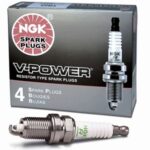 |
Set of 8 NGK TR5 Spark Plugs |
 |
3/8″ Inch Drive Flex Head Ratchet One from Harbor Freight works great. Will be needed to angle the socket a bit for loosening and installing the spark plugs. |
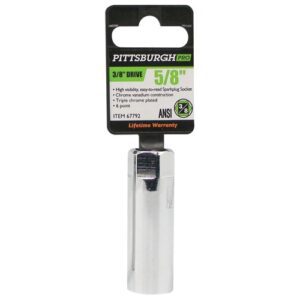 |
5/8″ Inch Spark Plug Socket For A 3/8″ Inch Drive Ratchet Do NOT use a regular socket! Only use a spark plug socket which will hold the spark plug in the socket without sliding out. If the spark plug slides out of the socket and hits the floor you could damage the spark plug and if used could cause a misfire on your engine. Also when you drop the spark plug it could fall into the skid plate covering the oil pan and you may not be able to retrieve it without removing the skid plate. If you ever suspect you have damaged a spark plug, do not use it. Buy a new spark plug. |
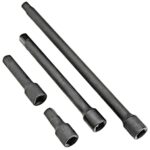 |
3/8″ Inch Drive Extension Set You do not need to use the black impact extensions, the regular chrome ones will work. I personally like the impact extensions better. They lock in the socket and ratchet better and are much stronger. Available at Harbor Freight and are fairly inexpensive. |
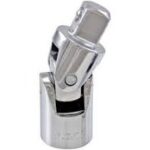 |
3/8″ Inch Drive Universal Joint Swivel You will only need this if you do not have a flex head ratchet for removing and installing the spark plugs. You will need this for the torque wrench to properly tighten the spark plugs. |
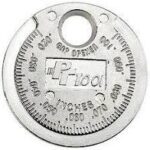 |
Can be purchased at almost any auto parts store for under $2. A necessity for properly gapping the spark plugs. |
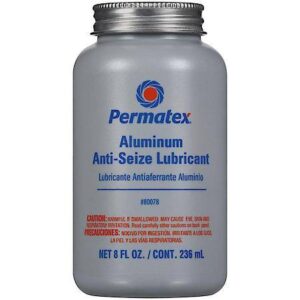 |
Permatex Aluminum Anti-Seize Lubricant This will be used lightly on the threads of the spark plugs from keeping them from becoming “stuck” in the cylinder head. Over time spark plugs can become harder to remove than they should be. This caused by the constant heating and cooling of the spark plug contrasting and expanding in the cylinder head. The cylinder heads are made of aluminum and you do not want to damage them in any way. Now, this can be up for debate as some say not to use Anti-Seize on spark plugs because you may actually over-tighten the plugs. I disagree and if you do it my way, you will never have a problem. |
 |
For use inside the spark plug wire boots to prevent the boots from sticking onto the spark plugs. Spark plug wires should snap on and off the spark plugs nice and easy with very little force. |
|
3/8″ Inch Drive Torque Wrench Torque wrench that is capable of properly torquing to 11 foot-pounds. This is the ICON torque wrench from Harbor Freight. Has both foot-pounds and inch-pounds readings. 132 inch-pounds is the same as 11 foot-pounds of torque. You could also use a 1/4″ drive torque wrench with a 3/8″ drive to 1/4″ drive adapter, as long as it can torque to 132 inch-pounds or 11 foot-pounds. |
|
| PATIENCE | The last thing you need is patience. Don’t be in a hurry. Do not force or muscle the spark plugs. They are very delicate and can be damaged easily if dropped or banged around. Do not over-tighten the spark plugs when installing them. Hand tighten. Make sure they screw in nice and easy. You do not want to cross-thread the spark plug opening on the cylinder heads. |
STEP 1:
After purchasing your spark plugs, open each one up and check the gap of every spark plug using your spark plug gapping tool. They are pre-gapped from the factory but check them anyway. They could have been banged around during shipping changing the gap of the plug. Check every plug so you are ready to install them. If it is necessary to widen the gap, do so with a tool that only pulls back on the ground electrode without touching the center electrode or the porcelain. To close the gap on a plug, gently tap the plug, electrode first on a hard surface.
NGK doesn’t recommend adjusting the plug gap more than .008″ in either direction. Beyond that slight adjustment, the ground electrode and center electrode won’t align properly, hindering spark plug performance and drastically reducing plug life.
Time to start removing a spark plug. For this exercise, we are just going to concentrate on doing one spark plug at a time. All of the steps can be repeated for each spark plug. Pop the hood and let us get started. Start with the driver’s side spark plug closest to the front of the car. This is actually cylinder Number 1. I’m telling you to start here because it is the easiest spark plug to get to.
| Note: Here is my FREE throw-in lesson. The engine has 8 cylinders and yes they all have designated numbers. The cylinders on the left of the engine (driver’s side) are all odd numbers 1-3-5-7. The cylinders on the right (passenger side) are all even numbers 2-4-6-8. See diagram: |
Gently pull the spark boot off of the spark plug (see picture below). If they are the original spark plug wires, be very careful, there is a possibility they might break. If they do break you will need to replace your spark plug wires. Your auto parts store can help you with this. Recommended 2004 Pontiac GTO Spark Plug Wire Set. Recommended 2005-2006 Pontiac GTO Spark Plug Wire Set. You can also visit the Spark Plug Wires section of this website for more information.
With the spark plug wire removed from the spark plug, it’s time to get out your tools. Grab your 3/8″ inch flex head ratchet, a 2″ to 4″ inch extension, and your 5/8″ inch spark plug socket. Place the socket over the spark plug and make sure it is all the way down and firmly in place over the spark plug. Begin to loosen the spark plug by turning the ratchet counterclockwise. Once the spark plug breaks loose, you can remove the ratchet from the extension and just use your hand to spin the extension and spark plug socket to pull the spark plug out. Carefully pull out the spark plug while it is still in the socket. Do not tip the socket down, point the socket upward to prevent the spark plug from sliding out of the socket and winding up on the floor or worse, trapped in the oil pan skid plate cover.
STEP 3:
Time to install the new spark plug. We have already gapped them from Step 1, so we can go ahead and install the spark plug worry-free. Place the new spark plug in your spark plug socket. Now take a very small dab of the Permatex Anti-seize and gently spread it on the threads of the spark plug. Only put it on the threads. Do not get any Anti-Seize on the electrode or tip of the spark plug. And again, you just need a little bit. Don’t go crazy. Just a light film around the threads only. See the picture below:
With the spark plug in the spark plug socket and you can leave a short extension on the socket, (do not use a ratchet at this point) gently put the spark plug in place of the spark plug hole in the cylinder head. Hand tighten the spark plug by turning the spark plug socket clockwise. The spark plug should screw in nice and easy with no resistance. You do not want to force the spark plug to screw in the hole, because you can damage the threads of the aluminum cylinder head. Keep tightening the spark plug by hand until you can not turn it anymore or the resistance becomes high when turning it. Leave the spark plug socket and extension on the spark plug.
Now the important part. You do not want to over-tighten the spark plug. It does not need to be in the cylinder head super tight, do not muscle it. The rule of thumb is hand tight and then a quarter of a turn more. But here at MarkQuitterRacing.com, we don’t use rules of thumb, we do it once, and do it the right way. Grab your 3/8″ inch drive torque wrench and set it to 11 foot-pounds or 132 inch-pounds. Attach the torque wrench to the extension on the spark plug socket. Slowly turn clockwise until you hear the click of the torque wrench and then stop tightening, you are done. This will not take a lot of pressure to achieve, so do not muscle it. If you would like to check it one more time for good measure, that would be fine. Turn clockwise until your torque wrench clicks. And that’s it, the spark plug is installed.
STEP 4:
Time to put that Dielectric Grease to use. Squeeze a small amount of Dielectric Grease into the spark plug wire boot (end of the spark plug wire that attaches to the spark plug) of the spark plug wire that was removed. You don’t need a lot, just enough to grease the inside of the spark plug wire boot. Attach the spark plug wire to your new spark plug, and you are done.
STEP 5:
Repeat all of the above steps for the remaining spark plugs. The passenger side is a bit tighter to maneuver around, so experiment with different length extensions and the use of the flex head ratchet or use the universal joint swivel to get the best angle to remove and install the spark plugs. Just remember, take your time, be patient, if it doesn’t fit don’t force it.
| Note: I hope you found the information contained on this website useful. Many hours of time and research have gone into building this website. Please feel free to donate to Mark Quitter Racing. Donations will be used to pay for website services or for any other practical use per your request which can be filled out on the PayPal donation link. There is no minimum amount, and your contribution is greatly appreciated. Donate here. |

